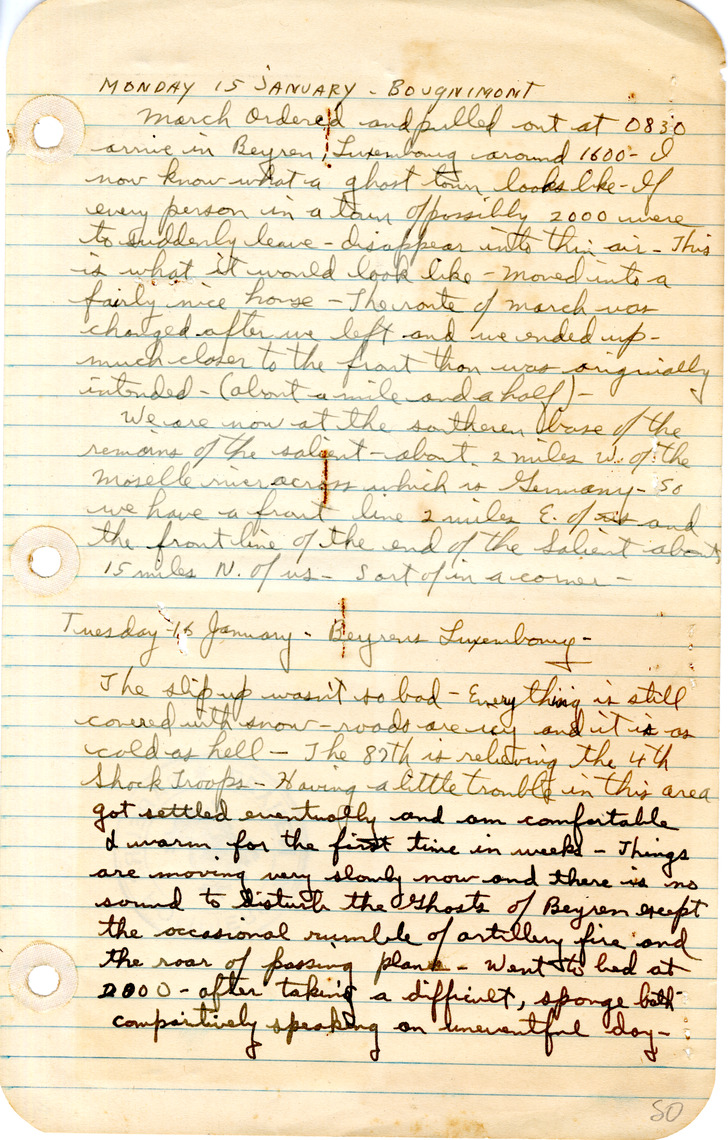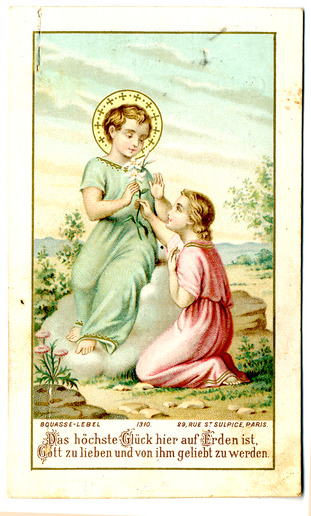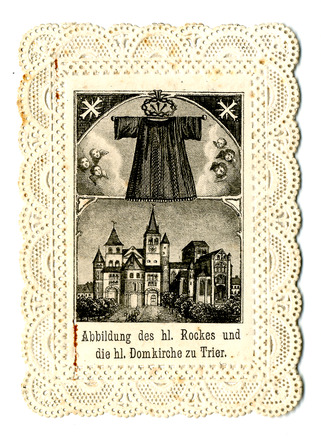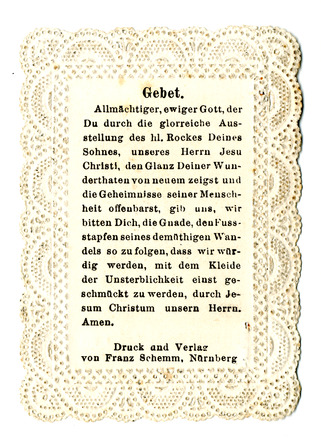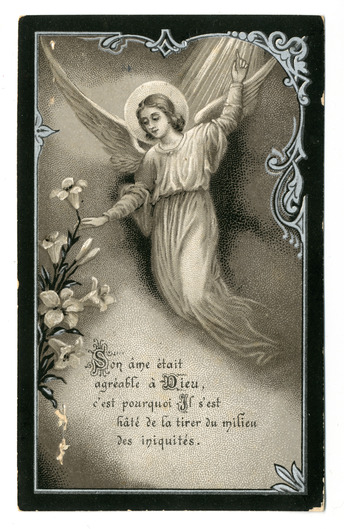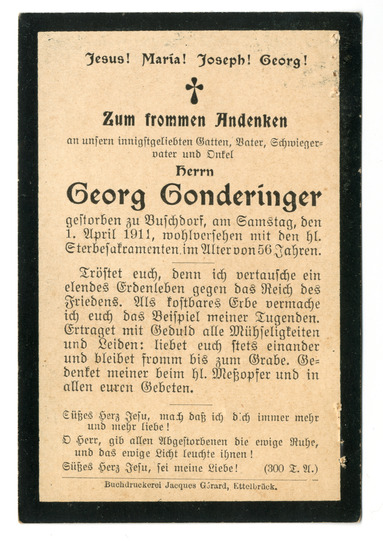Monday, 15 January [1945] Bougnimont, [Belgium]
March ordered and pulled out at 0830. Arrive in Beyren, Luxembourg around 1600. 1 Beyren is a small town in southeastern Luxembourg, in close proximity to the Moselle River. The German occupation, which forced many inhabitants to leave, along with heavy fighting during the Battle of the Bulge, reduced the town to near rubble and little else. See Map, Site #16. I now know what a ghost town looks like. If every person in the town of possibly 2,000 were to suddenly leave– disappear into thin air– this is what it would look like. Moved into a fairly nice house.2 Goetz picked up two strips of photograph negatives while stationed in the house. He placed them in an envelope and later attached it to the back of a page of his diary (17 January 1945) with the following note: “These pictures are of the people whose house we occupied in Beyren. They weren’t at home.” Insert 22a (1).
The route of march was changed after we left and we ended up much closer to the front than was originally intended (about a mile and a half).
We are now at the southern base of the remains of the salient, about 2 miles W. of the Moselle river across which is Germany.3 The Moselle River begins in the Vosges Mountains of France. A tributary of the Rhine River, it flows through France, Luxembourg, and Germany. Its prominence in all three countries made it a vital crossing point for Patton’s Third Army throughout most of 1944 and into 1945, particularly during the Battle of the Bulge. So we have a front line of 2 mile E. of us and the front line of the end of the Salient about 15 miles N. of us. Sort of in a corner.
Tuesday, 16 January [1945] Beyren, Luxembourg
The trip up wasn’t so bad. Everything is still covered with snow, roads are icy and it is as cold as hell. The 87th is relieving the 4th Shock Troops.4 Goetz is most likely referring to the Fourth Infantry Division, U.S. Army, which led Allied assaults during D-Day, the battle for St. Lo, the battle of the Huertgen Forest, and the Battle of the Bulge Having a little trouble in this area. Got settled eventually and am comfortable and warm for the first time in weeks. Things are moving very slowly now and there is no sound to disturb the Ghosts of Beyren except the occasional rumble of artillery fire and the roar of passing planes. Went to bed at 2000, after taking a difficult sponge bath. Comparatively speaking, an uneventful day.
